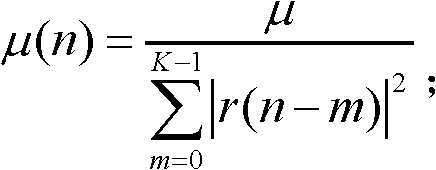Speech enhancement method of microphone array under non-stationary noise environment
A microphone array, non-stationary noise technology, applied in speech analysis, instruments, etc., can solve the problems of limited performance, inferior performance and limited suppression effect of speech enhancement technology
- Summary
- Abstract
- Description
- Claims
- Application Information
AI Technical Summary
Problems solved by technology
Method used
Image
Examples
Embodiment Construction
[0056] The microphone array speech enhancement method of the present invention is described with a specific embodiment. In the embodiment, the number of microphone array units is 2, the spacing is 8 cm, the beam width is 10 degrees, and the sampling frequency is 16000 Hz.
[0057] Such as figure 1 As shown, first, the reference background noise signal is calculated from the two microphone input signals:
[0058] r(n)=x 1 (n)-x 2 (n);
[0059] where x i (n) represents the input signal of the i-th microphone at time n. The background noise signal is used as a reference signal to perform adaptive filtering on the microphone signal to initially remove the noise in the microphone input signal. The adaptive filtering algorithm can use the commonly used NLMS algorithm, and the specific description is as follows:
[0060] w i (k,n)=w i (k,n-1)-μ(n)e i (n)n(n) k=0...K-1
[0061] μ ( n ) = μ...
PUM
 Login to View More
Login to View More Abstract
Description
Claims
Application Information
 Login to View More
Login to View More - R&D
- Intellectual Property
- Life Sciences
- Materials
- Tech Scout
- Unparalleled Data Quality
- Higher Quality Content
- 60% Fewer Hallucinations
Browse by: Latest US Patents, China's latest patents, Technical Efficacy Thesaurus, Application Domain, Technology Topic, Popular Technical Reports.
© 2025 PatSnap. All rights reserved.Legal|Privacy policy|Modern Slavery Act Transparency Statement|Sitemap|About US| Contact US: help@patsnap.com



